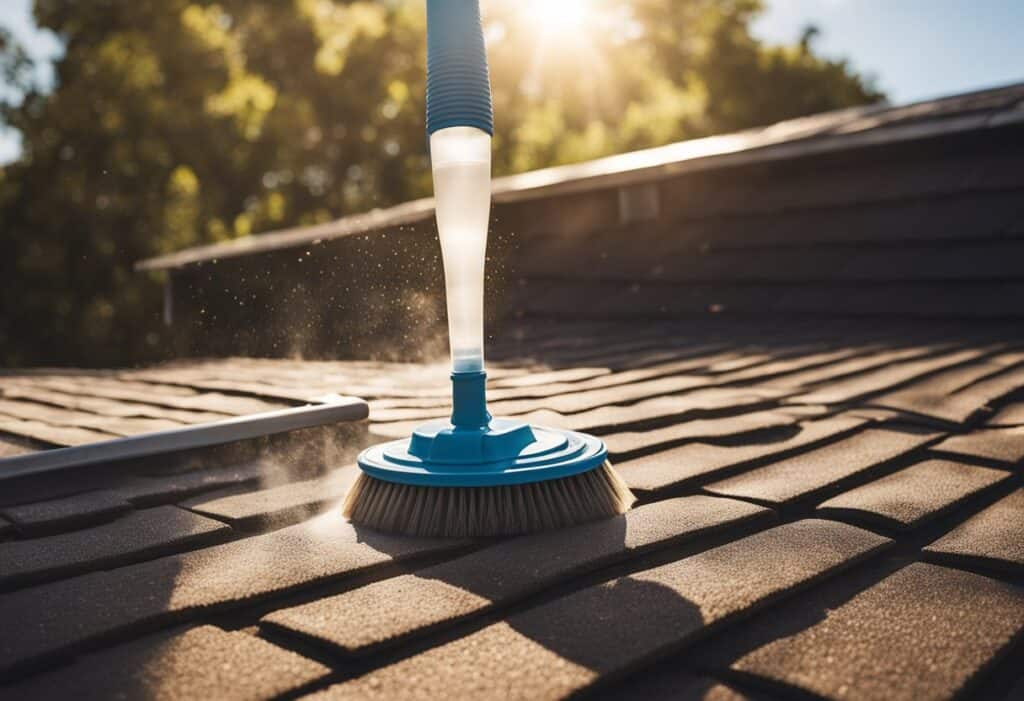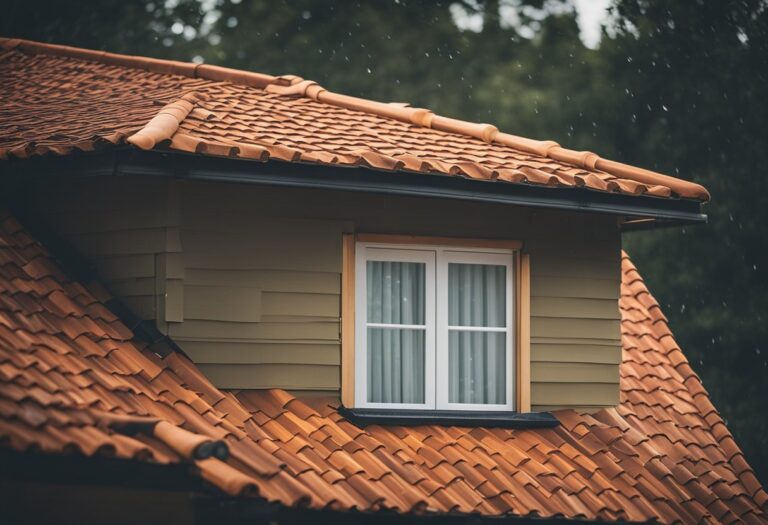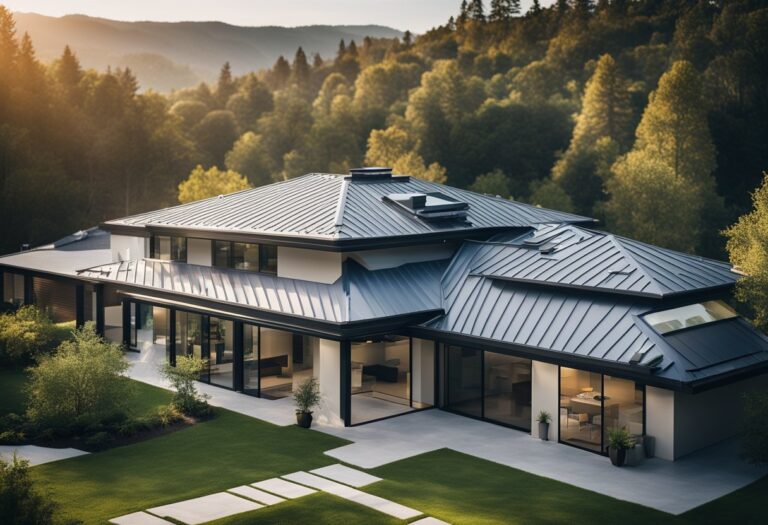Roof cleaning is an important aspect of maintaining a safe and healthy home. Over time, dirt, debris, and algae can build up on a roof, causing damage and reducing its lifespan. Regular cleaning can help prevent these issues and keep a roof looking its best.

There are many different types of roof cleaners available on the market, each with their own advantages and disadvantages. Some cleaners use bleach-based solutions to kill algae and other organic growths, while others use eco-friendly formulas that are safe for the environment. Pressure washing is another popular method of roof cleaning, although it can be risky if not done properly.
When choosing a roof cleaner, it’s important to consider the type of roof material, the severity of the buildup, and the desired outcome. Some cleaners may be too harsh for certain materials, while others may not be effective enough to remove stubborn stains. Homeowners should also take safety precautions when cleaning a roof, such as using proper equipment and wearing protective gear.
Benefits of Regular Roof Cleaning

Regular roof cleaning is an essential aspect of home maintenance. It not only enhances the curb appeal of your home but also extends the life of your roof by preventing damage. Below are some of the benefits of regular roof cleaning:
Extends Roof Longevity
Regular roof cleaning can help extend the life of your roof. Dirt, debris, moss, and algae can accumulate on the roof surface, leading to damage over time. Accumulated debris can trap moisture, which can seep through the roof and cause damage to the roof’s structure. By removing debris and other unwanted materials, regular roof cleaning can prevent damage and extend the life of your roof.
Prevents Damage
Regular roof cleaning can prevent damage to your roof caused by debris, moss, and algae. Moss and algae can grow on the roof surface, which can trap moisture and lead to damage. Cleaning the roof can remove the moss and algae, preventing damage to the roof’s surface. Regular roof cleaning can also prevent damage caused by fallen leaves, branches, and other debris that can accumulate on the roof.
Enhances Curb Appeal
Regular roof cleaning can enhance the curb appeal of your home. A clean roof can make your home look more attractive and well-maintained. It can also increase the value of your home if you plan to sell it in the future. A clean roof can also improve the overall appearance of your neighborhood.
In summary, regular roof cleaning can extend the life of your roof, prevent damage, and enhance the curb appeal of your home. It is an essential aspect of home maintenance that should not be overlooked.
Types of Roof Cleaners

When it comes to cleaning roofs, there are several types of cleaners available on the market. Homeowners can choose from chemical solutions, eco-friendly alternatives, and pressure washing methods. Each type of cleaner has its own advantages and disadvantages, and it’s important to choose the right one based on the type of roof and the severity of the stains.
Chemical Solutions
Chemical solutions are the most common type of roof cleaner. They work by breaking down and removing dirt, grime, and stains from the roof’s surface. These solutions typically contain bleach, which can be harmful to plants and the environment. Therefore, it’s important to use them carefully and follow the manufacturer’s instructions.
One popular chemical solution is the Mold Armor E-Z House Wash, which is known for its effectiveness and affordability. Another popular option is the Spray & Forget Revolutionary Roof Cleaner Concentrate, which is free of harmful chemicals and safe for the environment.
Eco-Friendly Alternatives
For homeowners who are concerned about the environment, eco-friendly alternatives are a great option. These cleaners are made from natural ingredients and are safe for plants, animals, and the environment. They work by breaking down and removing stains from the roof’s surface without causing any harm.
One popular eco-friendly alternative is the Wet & Forget Moss, Mold, Mildew & Algae Stain Remover, which is made from biodegradable ingredients and is safe for all types of roofing materials. Another popular option is the Simple Green Oxy Solve House and Siding Cleaner, which is made from plant-based ingredients and is safe for the environment.
Pressure Washing Methods
Pressure washing is another effective way to clean roofs. It involves using a high-pressure water spray to remove dirt, grime, and stains from the roof’s surface. However, this method can be risky and should only be done by a professional. Improper use of a pressure washer can cause damage to the roof’s surface and even lead to injury.
In summary, there are several types of roof cleaners available on the market, each with its own advantages and disadvantages. Homeowners should choose the right type of cleaner based on the type of roof and the severity of the stains. Chemical solutions are the most common type of cleaner, but eco-friendly alternatives and pressure washing methods are also effective options.
Safety Considerations for Roof Cleaning

Roof cleaning can be a dangerous task, and safety should always be a top priority. Here are some important safety considerations to keep in mind when attempting to clean your roof.
Personal Protective Equipment
It is essential to wear proper Personal Protective Equipment (PPE) when cleaning your roof to prevent injury from chemicals and debris. Always wear a safety harness and sturdy, slip-resistant shoes when cleaning your roof. Additionally, use gloves and eye protection to protect your hands and eyes from chemicals and debris.
Ladder and Roof Safety
Ladder and roof safety are also crucial when cleaning your roof. Always inspect your ladder before use to ensure it is in good condition and can support your weight. Place the ladder on a level, stable surface and secure it to prevent it from slipping.
When climbing onto the roof, use a sturdy, stable ladder that extends at least three feet beyond the roof’s edge. Once on the roof, move slowly and carefully to avoid slipping or falling.
It is also important to be aware of the roof’s condition. Avoid stepping on damaged or wet areas of the roof, as they can be slippery and unstable. Additionally, be cautious around the roof’s edges to prevent falls.
By following these safety considerations, you can help ensure a safe and successful roof cleaning project.
How to Choose the Right Roof Cleaner

Cleaning a roof is an important part of home maintenance. However, it is important to choose the right roof cleaner to avoid damaging the roof. Here are some factors to consider when choosing a roof cleaner.
Assessing Roof Material
Different types of roofs require different types of cleaners. For example, asphalt shingle roofs are best cleaned with a cleaner that contains sodium hypochlorite, while metal roofs can be damaged by cleaners that contain chlorine bleach. To determine the best cleaner for your roof, consult the manufacturer’s recommendations or consult a professional roofer.
Considering Local Climate
The local climate can also influence the type of roof cleaner that is best for your roof. In areas with high humidity, for example, algae and moss can grow quickly on roofs. In these areas, a roof cleaner that contains a biocide may be necessary to prevent the growth of these organisms. In areas with high winds, it is important to choose a cleaner that will not harm nearby plants or animals.
Understanding Manufacturer Recommendations
Manufacturers of roofing materials often provide recommendations for cleaning their products. It is important to follow these recommendations to avoid damaging the roof or voiding the manufacturer’s warranty. Some manufacturers may recommend specific cleaners or cleaning methods, while others may provide general guidelines for cleaning the roof. It is important to follow these recommendations carefully to ensure that the roof is cleaned safely and effectively.
In summary, choosing the right roof cleaner involves assessing the roof material, considering the local climate, and understanding the manufacturer’s recommendations. By taking these factors into account, homeowners can choose a roof cleaner that will effectively clean the roof without causing damage.
DIY Roof Cleaning Tips

Cleaning your roof is an essential part of maintaining your home. A clean roof not only enhances the look of your home but also helps to extend the life of your roof. In this section, we will provide you with some DIY roof cleaning tips to help you get started.
Preparation Steps
Before you begin cleaning your roof, it is important to take some preparation steps. These steps will help you to ensure that the cleaning process goes smoothly and safely.
- Safety First: Always wear protective gear such as gloves, goggles, and a mask when working with cleaning solutions and climbing on your roof.
- Clear the Roof: Remove any debris, such as leaves, branches, or other objects, from the roof surface.
- Cover Plants: Cover any nearby plants or landscaping with plastic sheeting to protect them from the cleaning solution.
- Choose the Right Cleaner: Select a roof cleaner that is appropriate for your roof type and follow the manufacturer’s instructions for use.
Application Techniques
Once you have prepared your roof for cleaning, you can begin applying the cleaning solution. Here are some tips for applying the solution effectively:
- Work in Sections: Divide your roof into sections and work on one section at a time to ensure that you cover all areas of your roof.
- Apply Solution Evenly: Use a sprayer or a soft-bristled brush to apply the cleaning solution evenly across the surface of your roof.
- Allow Time to Soak: Allow the solution to soak into the roof surface for the recommended amount of time.
- Rinse Thoroughly: Rinse the roof thoroughly with a garden hose, using a low-pressure setting to avoid damaging your roof.
Post-Cleaning Maintenance
After you have finished cleaning your roof, there are a few steps you can take to ensure that your roof stays clean and well-maintained:
- Inspect Your Roof: Inspect your roof regularly for signs of damage or wear and tear.
- Trim Trees: Trim any nearby trees or branches to prevent them from rubbing against your roof and causing damage.
- Clean Your Gutters: Clean your gutters regularly to prevent debris from accumulating on your roof.
- Schedule Regular Cleanings: Schedule regular cleanings to keep your roof looking its best and to prevent any potential damage from occurring.
By following these DIY roof cleaning tips, you can keep your roof in top condition and ensure that it lasts for many years to come.






